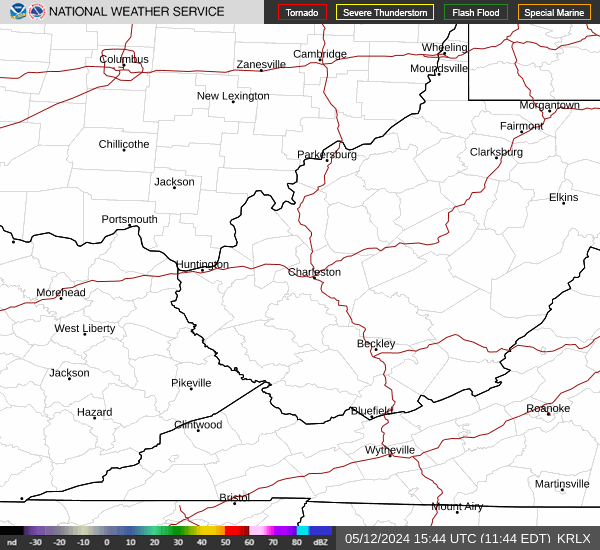A Brief History of Scalia Laboratory and Meteorology at Ohio University
Ohio University’s Scalia Lab started with two courses designed to give students experience in forecasting and recording weather observations. At the students’ disposal were a Bendix Aerovane, a standard cottonwood instrument shelter with a max and min thermometer, and a standard eight inch rain gauge.
Early Days
In 1981, two undergraduates, John Coulter and Mark Miller, asked if they could expand the forecasting program at Ohio University. They wanted to publish the forecast on an answering machine. They would climb to the top of Porter Hall, ascend the weather observations platform, and then receive the National Weather Service forecast from Pittsburgh by turning a weather radio in just the right direction. Combining this with watching local weather signs and the local television meteorologists, they would prepare a forecast and put this forecast on the answering machine, which had been bought for them.
About two months later they asked for a second answering machine. As money was tight at the time, a request for a second answering machine seemed a little troublesome, so it included a counter. It logged 30 calls, which was the maximum it could answer, in the first hour. A little extrapolation indicated that the first machine had been worn out, requiring the purchase of a third machine. This third machine took 100 calls as it filled up as well. Meanwhile, the up-and-coming lab began to receive calls from people who said that the line was busy.
The Scalia Lab for Atmospheric Analysis was officially founded in 1984. Jon Skindlov (Now Dr. Jon Skindlov, Senior Research Scientist, Salt River Project, Tempe, Arizona) came to the lab in 1982 and started work as Scalia’s first associate director. Jon brought a wealth of experience with his work in Oklahoma City as an on-air meteorologist at KFOR for 8 years under the name of Jon Anders.
Originally, the signal for weather observation was acquired from the National Weather Service in Parkersburg, West Virginia. To get the job done, the lab had to lease a dedicated, always operational long-distance line from AT&T. Prices to maintain this long-distance line kept increasing, with the monthly bill eventually topping out at $600. To get around this problem, the lab decided to contract with Alden Electronics to deliver maps via satellite. The maps were delivered to a small satellite dish on the roof, something which was relatively unheard of in 1984 but common today. Often the signal was scrambled, so chicken wire was used around the dish to maintain the signal.
By use of a DIFAX machine (basically a large fax machine), the lab could receive maps from the National Weather Service. The number of maps received per day was fluid, limited by the nascent lab’s budget. When times were good, the lab would take as many a 40 maps per day; when the budget was tight, it would only receive 10.
Exponential Growth
As call volumes continued to increase and machines continued to wear out, the lab contacted the Dictaphone Corporation and installed three lines to handle the volume. When the call volume was counted, Scalia Lab found that instead of taking tens of calls per day, it was taking hundreds of calls. Even with three machines, the lab could not keep up with busy event days; snow, ice, and severe thunderstorms led to the lines being jammed with calls. Again, the lab expanded and moved to a sixth line and system, as well as two Dictaphone machines. In its first year of operation, Scalia lab recorded over 100,000 calls.
Three more lines and yet another Dictaphone machine were installed. Forecasters had to become experts at handling all three microphones simultaneously without letting them touch. Call volumes increased dramatically by the late 1980s to over 400,000 calls per year.
The line was sponsored by numerous groups, such as Bank One, The Hocking Valley Bank, and the College of Osteopathic Medicine.
In 1992, under associate lab Director Clark Earick, Frognet provided the lab with a free homepage on the Internet. Later on, Katy Fitzpatrick updated the web page to include current weather observations, a climatic summary page, and a staff page. Kevin Thiel then moved the website to the physics servers for increased stability, and expanded the number of products on the website to include climate analysis, Hocking River, radar, satellite, social media, and winter weather analysis pages. The number of hits was small at first but now averages about 10,000 a month.
In January 1999, a severe ice storm hit the region. During one 24 hour time period around this storm, the lab recorded 17,000 calls, proving to be the absolute maximum capacity of the system. The lab served as a clearing house for emergency road information for the region.
Modern & Accurate
Today, the lab serves the southeast Ohio region and provides undergraduate students with the opportunity to gain real-time forecasting experience. The laboratory is also involved within the community, conducting outreach at local schools, working with organizations to promote weather literacy, and partnering with the National Weather Service in both storm spotter training and storm surveys in the region. Scalia Lab has its own Facebook and Twitter Pages, which relay important forecasts to the public and have helped to expand the utility of the website.
Additionally, undergraduate and graduate students are involved in numerous research projects using the software and hardware in the lab. These projects range from using a combination of radar observations with GIS information to study the movement and tracks of tornadoes, to understanding the climate of Antarctica through pressure reconstructions.
Dr. Ryan Fogt is the current director of the laboratory. Nico Sartori is the lab’s current associate director.



